
Sciences in Cold and Arid Regions
Scope & Guideline
Advancing knowledge for resilient ecosystems.
Introduction
Aims and Scopes
- Ecological Dynamics in Cold and Arid Regions:
Research focusing on the interactions among organisms and their environment in cold and arid ecosystems, including plant and microbial diversity, and their responses to climate variations. - Soil Science and Geotechnical Engineering:
Studies that investigate the physical and chemical properties of soils in cold and arid areas, including their behavior under various environmental conditions such as freeze-thaw cycles, salinity, and erosion. - Climate Change Impacts and Adaptation Strategies:
Research that examines the effects of climate change on cold and arid regions, including temperature variations, precipitation patterns, and strategies for adaptation and resilience. - Remote Sensing and Environmental Monitoring:
Utilizing satellite and other remote sensing technologies to assess environmental changes, such as snow depth, vegetation dynamics, and soil moisture in cold and arid landscapes. - Hydrology and Water Resource Management:
Studies focused on water resource availability and management in arid regions, considering factors such as evapotranspiration, groundwater dynamics, and glacial melt. - Geophysical and Geological Studies:
Research involving the geological characteristics and processes of cold and arid regions, including permafrost studies, desertification, and landform evolution.
Trending and Emerging
- Impact of Climate Change on Ecosystems:
There is an increasing focus on understanding how climate change affects ecosystems in cold and arid regions, with studies examining shifts in species composition, biodiversity, and ecosystem services. - Soil Microbial Diversity and Functionality:
Research on soil microbial communities and their roles in nutrient cycling and soil health is trending, highlighting the importance of microbial diversity in maintaining ecosystem resilience. - Geospatial Analysis and Modeling:
The use of advanced geospatial technologies and modeling approaches to study environmental changes and resource management is on the rise, indicating a growing interest in data-driven research methods. - Effects of Freeze-Thaw Cycles:
Studies examining the effects of freeze-thaw cycles on soil and vegetation are increasingly relevant, as they are critical for understanding the dynamics of cold environments under climate change. - Water Resource Dynamics and Management Solutions:
Emerging research themes are focusing on innovative management strategies for water resources in arid regions, addressing challenges posed by climate variability.
Declining or Waning
- Highway and Infrastructure Studies in Cold Regions:
Although initially a significant focus, studies specifically addressing the performance of highways and infrastructure in cold regions have decreased, possibly due to previous saturation of research or advancements in engineering practices. - Historical Climate Studies:
Research specifically focused on historical climate data and its implications for current conditions appears to be waning, as there is a shift towards more immediate climate change impacts and adaptive responses. - Traditional Agricultural Practices in Arid Regions:
There has been a noticeable decline in studies centered on traditional agricultural practices, possibly due to a transition towards more innovative, sustainable agricultural methods that better suit changing climatic conditions. - Mercury and Pollution in the Cryosphere:
Research on mercury behaviors and environmental effects in cold regions is becoming less frequent, which might indicate a shift in focus towards more pressing issues like climate change adaptation and resilience.
Similar Journals

Physio-Geo
Exploring the Interactions of Earth and EcologyPhysio-Geo (ISSN: 1958-573X) is a distinguished open-access journal published by REVUES ORG, dedicated to advancing the fields of Earth and Planetary Sciences, with a special focus on Earth-Surface Processes, Environmental Science, and Ecology. Since its inception in 2007, Physio-Geo has provided a platform for researchers, professionals, and students to disseminate and access high-quality studies that contribute to the understanding of our environment. With a convergence period from 2019 to 2024, the journal aims to bridge disciplinary gaps and foster interdisciplinary research that addresses pressing ecological and environmental challenges. Despite its current Scopus rankings reflecting an early-stage development, the journal is poised to enhance its impact within the scientific community, particularly as it embraces a wider audience through its open-access model. By offering valuable insights and comprehensive analyses, Physio-Geo is an essential resource for those seeking to explore the complex interactions between physical geography and ecological systems.

Frontiers in Earth Science
Unveiling the Secrets of Our Planet's Past and FutureFrontiers in Earth Science is a leading open-access journal published by FRONTIERS MEDIA SA, based in Switzerland. With its ISSN N/A and E-ISSN 2296-6463, this journal has firmly established itself in the realm of Earth and Planetary Sciences, evidenced by its exceptional Q1 ranking in the 2023 category of Earth and Planetary Sciences (miscellaneous) and a solid position of Rank #66/195 in Scopus, placing it in the 66th percentile among its peers. Since its inception in 2013, Frontiers in Earth Science has embraced the open access model, promoting widespread dissemination and accessibility of research findings. The journal covers a broad scope, including areas such as geology, meteorology, oceanography, and environmental science, fostering interdisciplinary communication and advancement. Researchers, professionals, and students looking to stay at the forefront of Earth science research will find an invaluable resource in this journal, which not only curates high-quality research but also supports innovative and impactful studies that address the pressing challenges facing our planet today.
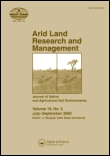
ARID LAND RESEARCH AND MANAGEMENT
Advancing knowledge for resilient arid environments.ARID LAND RESEARCH AND MANAGEMENT is a leading journal in the field of Soil Science, published by Taylor & Francis Inc in the United Kingdom. With a focus on the sustainable management of arid and semi-arid lands, this journal aims to bridge the gap between scientific research and practical application. It garners a respectable impact factor, categorically positioned in the Q2 quartile within its field and ranks 59th out of 159 in Scopus, representing the top 63rd percentile of journals in Agricultural and Biological Sciences - Soil Science. As an essential resource for researchers, practitioners, and students alike, ARID LAND RESEARCH AND MANAGEMENT publishes high-quality, peer-reviewed articles that cover a wide range of topics, from soil conservation techniques to innovative land management practices. Open access options are available, facilitating broader dissemination of knowledge critical to addressing global challenges associated with arid environments. Targeting a pivotal area of study, this journal plays a significant role in advancing the understanding and management of these unique ecosystems, making it a valuable asset for anyone engaged in environmental sustainability.
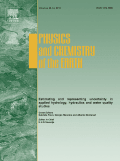
PHYSICS AND CHEMISTRY OF THE EARTH
Illuminating Earth's Processes through Collaborative ScienceThe Physics and Chemistry of the Earth is a premier interdisciplinary journal published by Pergamon-Elsevier Science Ltd, dedicated to advancing the understanding of Earth sciences through the integration of geophysical and geochemical perspectives. With an ISSN of 1474-7065 and an E-ISSN of 1873-5193, the journal serves as a critical platform for researchers and professionals to disseminate key findings and innovative methodologies in the realms of geophysics and petrology. As of 2023, it proudly holds a Q2 ranking in both Geochemistry and Petrology and Geophysics, reflecting its robust impact in the scientific community, with Scopus rankings that position it in the top 20% and 32% of its respective categories. Notably, the journal is available in an open-access format, allowing for greater dissemination and accessibility of research contributions. With a publication history spanning from 1992 to 2024, Physics and Chemistry of the Earth stands as a vital resource for ongoing research and discovery in the Earth sciences, making it an essential read for academics and practitioners alike.
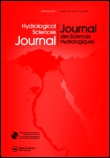
Hydrological Sciences Journal
Exploring the depths of hydrological innovation.Hydrological Sciences Journal, published by Taylor & Francis Ltd, is a leading peer-reviewed publication dedicated to advancing the field of hydrology, spanning topics from water management to climate impacts on hydrological systems. With an impressive impact factor and a noted Q1 category ranking in Water Science and Technology, the journal occupies a pivotal role in the academic landscape, facilitating high-quality research dissemination since its inception in 1982. The journal is indexed in Scopus, holding a commendable rank of #48 out of 261 in the Environmental Science category, placing it in the 81st percentile among its peers. Although it does not offer Open Access options, the journal ensures extensive reach and readership through institutional subscriptions. As it converges toward its milestone of 2024, the Hydrological Sciences Journal remains an indispensable resource for researchers, professionals, and students eager to explore the latest advancements and methodologies in hydrological research.
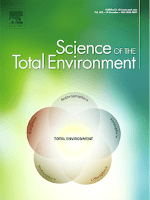
Science of The Total Environment
Driving Change Through Comprehensive Environmental ResearchScience of The Total Environment, an esteemed journal published by Elsevier, holds a significant position in the field of environmental science, encompassing critical areas such as Environmental Chemistry, Environmental Engineering, Pollution, and Waste Management and Disposal. With an impressive impact factor and ranked in the Q1 quartile across its categories for 2023, the journal is recognized for its high-quality research output and contribution to environmental sustainability. Operating from its base in the Netherlands, the journal has been a valuable resource since its inception in 1972, welcoming innovative studies that address complex environmental challenges. Its notable rankings—such as Rank #9 in both Environmental Sciences and Pollution—underscore its relevance and influence in the academic community. Although the journal currently does not provide an open access option, the robust findings and discussions presented within its pages continue to foster a deeper understanding of environmental issues. Science of The Total Environment is an essential platform for researchers, professionals, and students dedicated to advancing knowledge and solutions in the rapidly evolving field of environmental science.
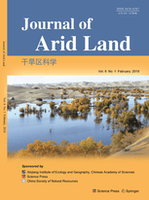
Journal of Arid Land
Illuminating challenges and opportunities in dry environments.Journal of Arid Land, published by SPRINGER HEIDELBERG, is a pivotal platform dedicated to advancing knowledge in the fields of Earth-Surface Processes, Management, Monitoring, Policy and Law, and Water Science and Technology. With an ISSN of 1674-6767 and an E-ISSN of 2194-7783, this journal stands out as a prominent source of scholarly research focusing on the unique challenges and opportunities of arid and semi-arid environments, particularly relevant in the context of global climate change. As of 2023, it holds a commendable Q2 ranking in several critical categories, underscoring its impact in environmental science and related disciplines. The journal, which has been in publication since 2009 and is set to continue through 2024, provides unrestricted access to high-quality research that sheds light on sustainable practices and effective policies. With its focus on arid lands, the Journal of Arid Land plays an essential role in fostering interdisciplinary dialogue among researchers, practitioners, and policymakers striving to address the pressing issues faced by these ecosystems.

Environmental Earth Sciences
Innovating solutions for contemporary environmental challenges.Environmental Earth Sciences is a prestigious journal published by Springer, dedicated to advancing knowledge in the multifaceted fields of Earth Sciences, including Earth-Surface Processes, Environmental Chemistry, Geology, and Soil Science. With an ISSN of 1866-6280 and an E-ISSN of 1866-6299, this journal occupies a notable position in the academic landscape, consistently ranked in the Q2 category across multiple disciplines in 2023. It supports open access to foster wider dissemination of impactful research, enhancing visibility and accessibility for authors and readers alike. The journal's ongoing commitment to publishing innovative studies and reviews makes it an essential resource for researchers, professionals, and students alike. With a strong focus on addressing contemporary environmental challenges, Environmental Earth Sciences invites contributions that are both original and interdisciplinary, making a significant impact in understanding Earth dynamics and sustainability.

COLD REGIONS SCIENCE AND TECHNOLOGY
Innovating Solutions for Cold Climate ChallengesCOLD REGIONS SCIENCE AND TECHNOLOGY is a prestigious journal published by Elsevier, widely recognized for its substantial contributions to the fields of Earth and Planetary Sciences and Geotechnical Engineering and Engineering Geology. Established in 1979 and with a converged publication cycle extending to 2024, this journal holds an impressive position within academic circles, reflected in its Q1 ranking for both categories in the latest 2023 evaluations, showcasing its relevance and influence in the scientific community. With a Scopus ranking of 23rd out of 195 in general Earth and planetary sciences and 40th out of 229 in its specialized engineering fields, the journal serves as a vital resource for researchers, professionals, and students seeking to advance their understanding of the complexities of cold region environments. Although currently not an open-access publication, COLD REGIONS SCIENCE AND TECHNOLOGY continues to be an essential platform for innovative research and interdisciplinary studies, facilitating knowledge exchange among experts addressing the challenges posed by cold climates.

JOURNAL OF THE AMERICAN WATER RESOURCES ASSOCIATION
Connecting researchers and practitioners in the vital realm of water resources.The JOURNAL OF THE AMERICAN WATER RESOURCES ASSOCIATION, published by Wiley, is a premier platform dedicated to advancing the field of water resource management and research. With an ISSN of 1093-474X and an impressive Q1 ranking in multiple categories, including Earth-Surface Processes, Ecology, and Water Science and Technology, this journal serves as a vital resource for professionals, researchers, and students alike. Established in 1967 and set to converge through 2024, it has consistently published cutting-edge research that influences policy and practice in water resource management. The journal's open access option enhances its reach, ensuring that critical findings are accessible to a wider audience. The Scopus rankings further underscore its impact, placing it in the top quartile within its fields, highlighting its importance in shaping scholarly discourse. As a significant contributor to the understanding and management of freshwater systems, the journal offers a crucial means for sharing insights and fostering collaboration in the vital realm of water resources.